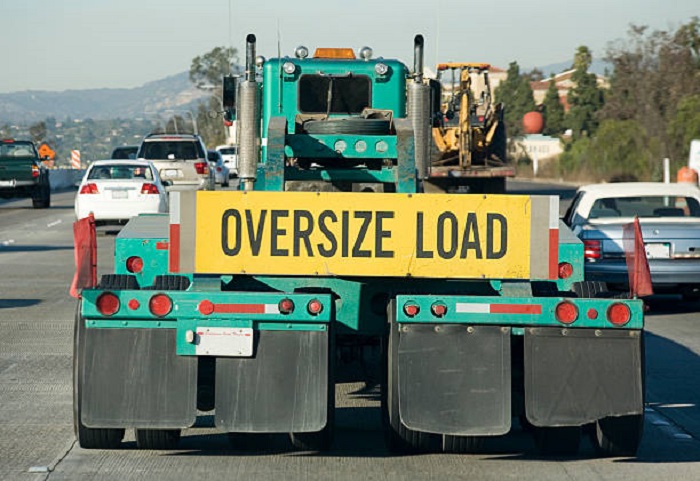Transporting oversized flatbed loads in Georgia demands strict compliance with state regulations to ensure safety and smooth travel. A Georgia oversize permit is essential for any load exceeding standard dimensions, often classified as a wide load. These permits authorize the movement of heavy or oversized cargo beyond typical size or weight limits, considering factors such as max height, axle spacing, and banner specs.
Understanding GDOT rules is crucial before planning your trip. The Georgia Department of Transportation requires detailed route surveys to assess road conditions and identify any restrictions, helping to prevent delays or safety hazards. Additionally, flatbed escorts or pilot cars are often mandatory for loads surpassing specific width thresholds to guide drivers and alert other motorists.
Travel restrictions, including a night travel ban, are enforced to minimize risks during low-visibility hours. Securing the correct permits and adhering to escort requirements not only complies with legal standards but also ensures a safer journey for oversized cargo carriers. This guide covers all you need to know about Georgia’s oversize permit process for flatbed loads. Learn more https://www.hmdtrucking.com/truck-driving-jobs/flatbed-atlanta/
2. Understanding GDOT Rules for Oversized Flatbed Loads
Navigating Georgia’s roads with oversized flatbed loads requires strict adherence to GDOT rules designed to ensure safety and efficiency. The Georgia oversize permit is your official authorization, but understanding the accompanying regulations is equally important. GDOT mandates that any wide load exceeding standard dimensions — such as max height, width, or axle spacing — undergo a thorough route survey. This survey assesses road infrastructure, bridges, and potential obstacles to determine the safest path.
Flatbed escorts or pilot cars often accompany loads exceeding certain width thresholds, providing real-time guidance and warning other drivers. These escorts play a critical role, especially on narrow or high-traffic routes. Banner specs, including the display of “Wide Load” signs, flashing lights, and flags, are required to increase load visibility.
Another key GDOT rule is the night travel ban, which restricts movement of oversize loads during low-visibility hours to reduce accident risks. Compliance with these regulations — securing the correct Georgia oversize permit, coordinating flatbed escorts, and adhering to travel restrictions — ensures a smoother journey for carriers and enhances road safety for all users. Staying informed about these GDOT requirements is essential for hassle-free transport of oversized flatbed loads in Georgia.
3. Key Requirements: Axle Spacing, Max Height, and Banner Specs
When hauling oversized flatbed loads in Georgia, understanding precise key requirements is vital for securing your Georgia oversize permit and complying with GDOT rules. One critical factor is axle spacing, which influences load distribution and determines if special permits or routing adjustments are necessary. Proper axle spacing ensures road safety and prevents infrastructure damage.
Max height restrictions in Georgia are strictly enforced to avoid collisions with bridges and overhead structures. Loads exceeding the standard max height require detailed route surveys, allowing GDOT to identify safe travel paths and any necessary detours.
Banner specs play a crucial role in load visibility. All wide loads must display clearly visible “Wide Load” banners, typically mounted on the front and rear of the flatbed. Accompanying flags and flashing lights enhance visibility, especially when paired with a flatbed escort or pilot car. These escorts help warn other drivers and navigate challenging segments of the route.
Adhering to these specifics — notably axle spacing, max height limits, and banner specs — not only meets legal mandates but also ensures the safety of both your cargo and other road users. Combined with observed travel restrictions like the night travel ban, these requirements form the backbone of safe oversize load transport in Georgia.
4. Flatbed Escort and Pilot Car Regulations
In Georgia, GDOT rules mandate flatbed escorts or pilot cars for oversized flatbed loads exceeding specific width thresholds to ensure safety and compliance. Key regulations include:
- Escort Requirement: Loads wider than 12 feet typically require at least one flatbed escort or pilot car; wider loads may need two escorts.
- Escort Equipment: Escorts must be equipped with “Wide Load” banners, flashing amber lights, and two-way radios for communication.
- Escort Positioning: Pilot cars usually lead or follow the load to warn motorists and assist in navigating tight routes identified during the route survey.
- Travel Restrictions: Escorts enforce the night travel ban; oversized loads may only move during daylight hours unless otherwise permitted.
- Permit Coordination: Escort services must be arranged alongside securing the Georgia oversize permit to comply fully with state regulations.
Following these escort rules safeguards your load and ensures adherence to Georgia’s oversize transport laws.
5. Navigating the GDOT Online Permitting Portal
Securing your Georgia oversize permit is streamlined through the GDOT Online Permitting Portal. Follow these steps for hassle-free application:
- Create an Account: Register your operator or company profile to access permit services.
- Enter Load Details: Input critical information such as axle spacing, max height, and load width to meet GDOT rules.
- Upload Required Documents: Submit route surveys and escort details, including flatbed escort or pilot car information if applicable.
- Select Travel Dates: Choose permissible travel windows compliant with the night travel ban and other restrictions.
- Specify Banner Specs: Confirm use of “Wide Load” banners and necessary safety equipment.
- Review and Submit: Double-check all data before submitting your application for processing.
- Receive Permit: Download or print your approved Georgia oversize permit to carry during transport.
Using the portal simplifies compliance and ensures your oversized flatbed load meets all state safety and legal requirements.
6. Restrictions: Night Travel Ban and Route Survey
When transporting oversized flatbed loads in Georgia, understanding travel restrictions is essential to comply with GDOT rules and secure your Georgia oversize permit. A key limitation is the night travel ban, which prohibits movement of wide loads during low-visibility hours, typically from sunset to sunrise. This restriction minimizes accident risks associated with reduced visibility, especially for loads with challenging dimensions like excessive max height or wide axle spacing.
Additionally, a comprehensive route survey is mandatory before approval. GDOT requires this detailed assessment to evaluate road conditions, bridges, and clearances along the intended path. The survey identifies potential hazards and helps determine if flatbed escorts or pilot cars are needed for safe navigation.
Combining adherence to the night travel ban with the thorough route survey ensures your transport plan accommodates banner specs, axle spacing, and other critical factors. This proactive approach guarantees safer journeys, smoother permit processing, and full compliance with Georgia’s oversize load regulations.
7. Conclusion: Ensuring Compliance for Safe Transport
Navigating permit requirements for oversized flatbed loads in Georgia demands thorough understanding and precise adherence to state regulations. From defining oversize dimensions and weight limits to recognizing necessary documentation, this guide has covered every critical step to secure the proper permits. Whether hauling wide, tall, or heavy cargo, obtaining the right oversize load permit ensures legal compliance and helps avoid costly fines or delays.
Equally important is knowledge of Georgia’s specific route restrictions, travel time limitations, and safety protocols, including escort vehicle mandates and signage requirements. Proper planning, including advance permit applications and coordination with the Georgia Department of Transportation, streamlines the process and promotes on-road safety.
By following these requirements carefully, carriers and drivers not only protect their shipments but also contribute to safer highways and infrastructure preservation. Staying informed about regional updates and maintaining open communication with regulatory bodies are key to ongoing compliance. Ultimately, securing the correct permits for oversized flatbed loads in Georgia is essential — empowering businesses to transport large cargo efficiently while prioritizing safety and legality every mile of the journey.














Leave a Reply